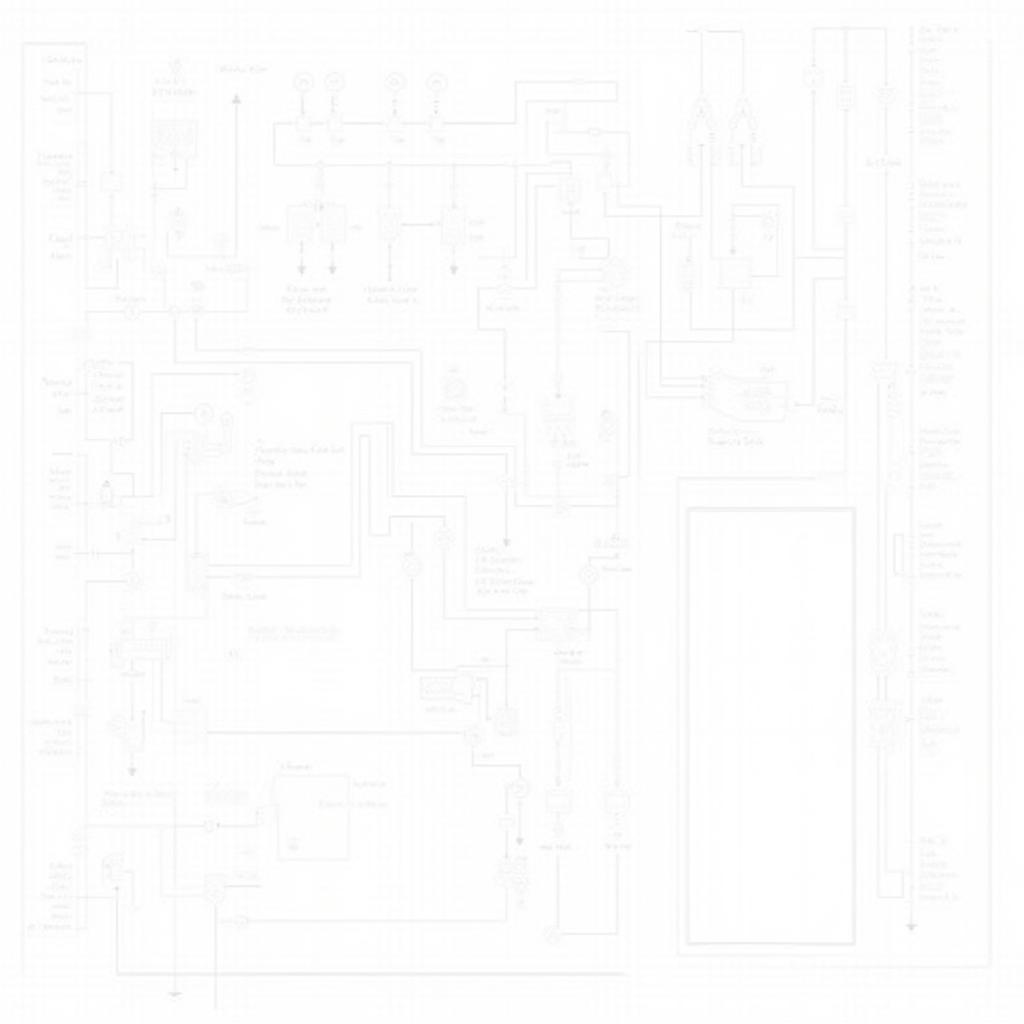Diagnosing car wiring problems can be a daunting task, but with a systematic approach and the right tools, you can pinpoint the issue and get your car back on the road. This guide will walk you through the process of How To Diagnose Car Wiring Problems, from basic checks to more advanced techniques.
 Car Wiring Diagram Showing Different Components and Circuits
Car Wiring Diagram Showing Different Components and Circuits
Understanding Your Car’s Electrical System
Before diving into diagnostics, it’s helpful to have a basic understanding of your car’s electrical system. It’s a complex network of wires, fuses, relays, and components that work together to power everything from your headlights to your engine control unit. Knowing how these elements interact can make diagnosing problems much easier. For example, if your headlights aren’t working, it could be a blown fuse, a faulty relay, or a problem with the wiring itself.
Common Symptoms of Wiring Problems
A variety of symptoms can indicate car wiring problems. These can range from minor inconveniences to major malfunctions. Some common signs include:
- Dim or flickering lights
- Electrical components not working
- Blown fuses
- Burning smell
- Overheating wires
- Strange noises from the electrical system
How to Diagnose Car Wiring Problems: A Step-by-Step Guide
Diagnosing wiring issues often involves a process of elimination. Here’s a step-by-step approach:
-
Check the fuses: Start with the simplest solution. Locate your car’s fuse box (usually under the dashboard or in the engine compartment) and check the relevant fuse for the malfunctioning component. If it’s blown, replace it with a new one of the same amperage.
-
Inspect the wiring: Visually inspect the wiring for any obvious signs of damage, such as fraying, corrosion, or burns. Pay particular attention to areas where wires might rub against sharp edges or be exposed to heat.
-
Test the battery: A weak or dying battery can cause a variety of electrical problems. Use a multimeter to test the battery voltage. A fully charged battery should read around 12.6 volts. If your battery doesn’t meet this voltage then you might be facing some problems like the ones faced by some 2003 Lincoln Town Car owners. Check our article about the 2003 lincoln town car problems for more information.
-
Use a test light or multimeter: These tools are essential for diagnosing wiring problems. A test light can help you quickly identify broken circuits, while a multimeter allows you to measure voltage, resistance, and continuity. Knowing using a meter to test electrical problem in car can quickly pinpoint problems in your electrical system.
-
Consult the wiring diagram: Your car’s wiring diagram is a roadmap of the electrical system. It shows the location of all the wires, components, and connectors. Use the diagram to trace the circuit for the malfunctioning component and check for breaks or shorts.
 Testing Car Wiring with a Multimeter
Testing Car Wiring with a Multimeter
Why is Diagnosing Wiring Problems Important?
Ignoring car wiring problems can lead to more serious issues, such as electrical fires or complete system failures. Addressing these issues promptly can save you time, money, and potential headaches down the road. If you have persistent issues using a car charger, such as when using the Nexus 7, you may want to consult our article about nexus 7 car charger problems.
What are some common tools for diagnosing car wiring problems?
Some common tools for diagnosing car wiring problems include a multimeter, test light, wiring diagram, and fuse puller.
How can I prevent car wiring problems?
Regular maintenance, such as checking for loose connections and corroded wires, can help prevent car wiring problems. Protecting wires from heat and abrasion is also crucial. If you’re experiencing issues with your car alarm, particularly in GM vehicles, you can check out our article about gm car alarm problems for more insight.
“Preventive maintenance is key when it comes to your car’s electrical system. Regular inspections can catch small problems before they become big headaches,” says automotive expert, Michael Stevenson.
 Checking Car Fuses in Fuse Box
Checking Car Fuses in Fuse Box
Conclusion
Diagnosing car wiring problems can be challenging, but by following these steps and using the right tools, you can successfully identify and fix the issue. Remember to consult your car’s wiring diagram and be patient. With a little persistence, you can get your car’s electrical system back in working order. If you are having issues with your car stereo, particularly a Boss car stereo, you can check out our article about boss car stereo problems. If you need further assistance, feel free to contact AutoTipPro at +1 (641) 206-8880 or visit our office located at 500 N St Mary’s St, San Antonio, TX 78205, United States.
“A methodical approach is crucial when troubleshooting electrical issues. Don’t jump to conclusions; instead, follow the steps and test systematically,” advises electrical engineer, Sarah Johnson. A final word of advice: “Always disconnect the battery before working on any electrical components to avoid shocks or damage,” reminds experienced mechanic, David Lee.





Leave a Reply